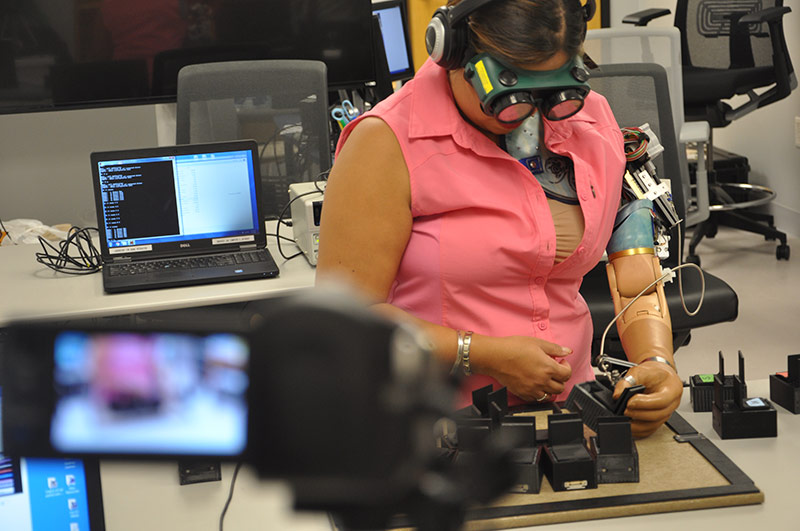New UNB research provides prosthetic limb users with a more natural and intuitive experience
Author: UNB Newsroom
Posted on Sep 2, 2021
Category: UNB Fredericton

For nearly six decades, the University of New Brunswick’s Institute of Biomedical Engineering (IBME) has undertaken leading-edge research into prosthetic limbs. In 1965, the group, then known as the Bio-engineering Institute, was part of the team responsible for Canada’s first myoelectric prosthetic limb fitting; the institute has continued to build on this early leadership through groundbreaking research.
UNB’s Dr. Jon Sensinger, the director of the IBME and a professor of electrical engineering, is one of three co-senior authors on a newly published journal article that reaffirms the institute’s leading role in the field, and the important impact it has on our world.
“In our research project, we wanted to see if we could make prosthetic limbs feel more natural for their users,” said Dr. Sensinger. “We found that by blending multiple types on sensory feedback, in our case touch and kinesthesia, the sense of movement, people behaved more naturally.
“We also found that this usefulness persisted not just when blindfolded, but also when the user could see the limb, which sets this improvement apart from most others.”
The research team, which also included IBME research engineer Katie Wilson, the Cleveland Clinic and the University of Alberta, is one of the first groups to provide this fusion of different types of feedback in a way that improved peoples’ experiences of the limbs.
In their article, “Neurorobotic fusion of prosthetic touch, kinesthesia, and movement promotes intrinsic brain behaviors,” featured on the cover of the latest issue of the journal Science Robotics, the authors present findings across an array of five metrics.
These metrics, unlike the ones conventionally used to capture and measure the behavioural changes by users, aren’t subject to what is known as the “ceiling effect.” This effect occurs when the majority of the results attain the maximum possible value; when this happens, it becomes effectively impossible to determine which solution is the most effective.
So, to improve a user’s experience, the team also had to improve the way they did the research. The teams collaborated to provide data on five metrics; UNB’s researchers provided the data on two of these.
“Through the use of these metrics, we were able to show that the participants with prosthetic limbs behaved more like persons without amputations when we turned on the blended feedback,” said Dr. Sensinger.
UNB’s researchers assessed micro-learning, which examines the subconscious adjustments you make from one attempt to the next, and embodiment, or how much you think that your prosthetic is a part of you.
“In one article, this team of researchers that includes two of our own has contributed not only new knowledge on a particular subject, but new insight into how the science itself can be improved,” said Dr. David MaGee, UNB’s vice-president (research). “Their research will help their academic colleagues and, perhaps more importantly, will help create a positive impact on peoples’ lives and health. Congratulations to all involved.”
Media contact: Jeremy Elder-Jubelin
Photo credit: Cleveland Clinic
